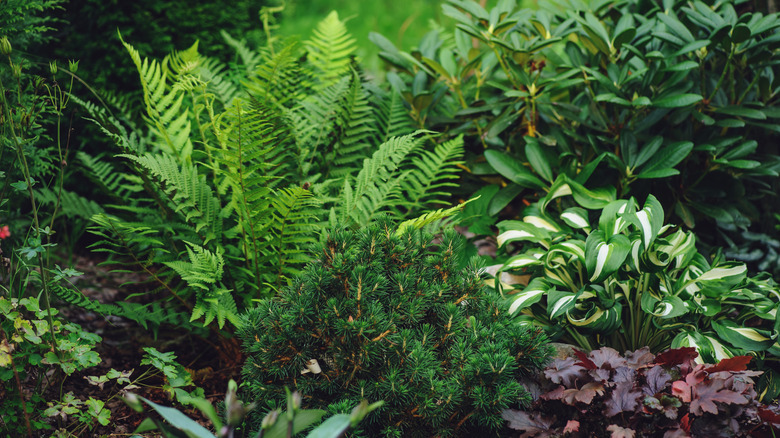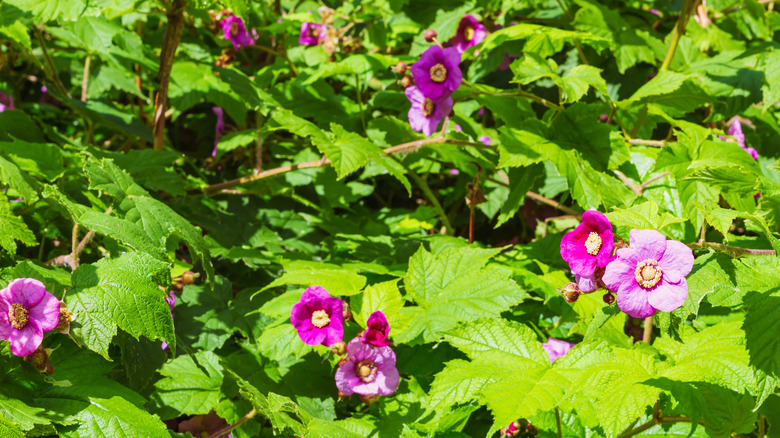The Flowering Plant That Can Bring A Pop Of Color To A Shade Garden
There's no doubt that shade gardens are beautiful, yes, but sometimes they can become a little too ... green. Plants like Hosta plantagineas, or hostas, and Adiantum venustum, or maidenhair ferns, are two common shade garden additions. You'll notice both of those plants are, in fact, mostly green. So if you're looking to add a little color to an overwhelmingly green shade garden, try Rubus odoratus, or the purple flowering raspberry.
Purple flowering raspberry plants, recognized widely as shrubs, are members of the rose family, along with plants like garden roses, strawberries, and apples. They are a low-maintenance plant, unlike other flowering shrubs that look beautiful but aren't worth growing your yard. They boast striking purple five-petal flowers with a contrasting yellow center, which reside at the ends of stems marked with small hairy hooks. As its name suggests, the purple flowering raspberry does indeed produce edible fruit — but raspberry lovers beware, this is not your usual pinky-red berry. The plant's berries are usually dry and unappetizing. Native to Eastern North America, purple flowering raspberry can grow to sizes of 6 feet tall and 12 feet wide.
How to grow purple flowering raspberry in your shade garden
Purple flowering raspberry can be easily propagated from bare root, seed, or even sprigs, but is also commonly available at plant nurseries. The best time of year to plant a raspberry bush is after the last frost in your area, once the soil is easily workable. The plant tolerates everything from full sun to part shade, making it a perfect candidate for a border to your shade garden. Purple flowering raspberry thrives in moist, well-draining soil — but be sure not to over-water, as its roots will rot when continuously exposed to too much moisture. It's also advised to plant it in an area that is not prone to flooding for the same reason. Prune your purple flowering raspberry plant immediately after it produces berries.
In terms of the fauna you can expect to be attracted to purple flowering raspberry, keep your eyes peeled for deer. While it is known to be mostly resistant to deer, some may still attempt to eat the berries, and young deer may seek shelter under larger plants. The plant is also a haven for pollinators thanks to its fragrant flowers, so expect to see bees and butterflies while blooms are at their peak in the summer.

